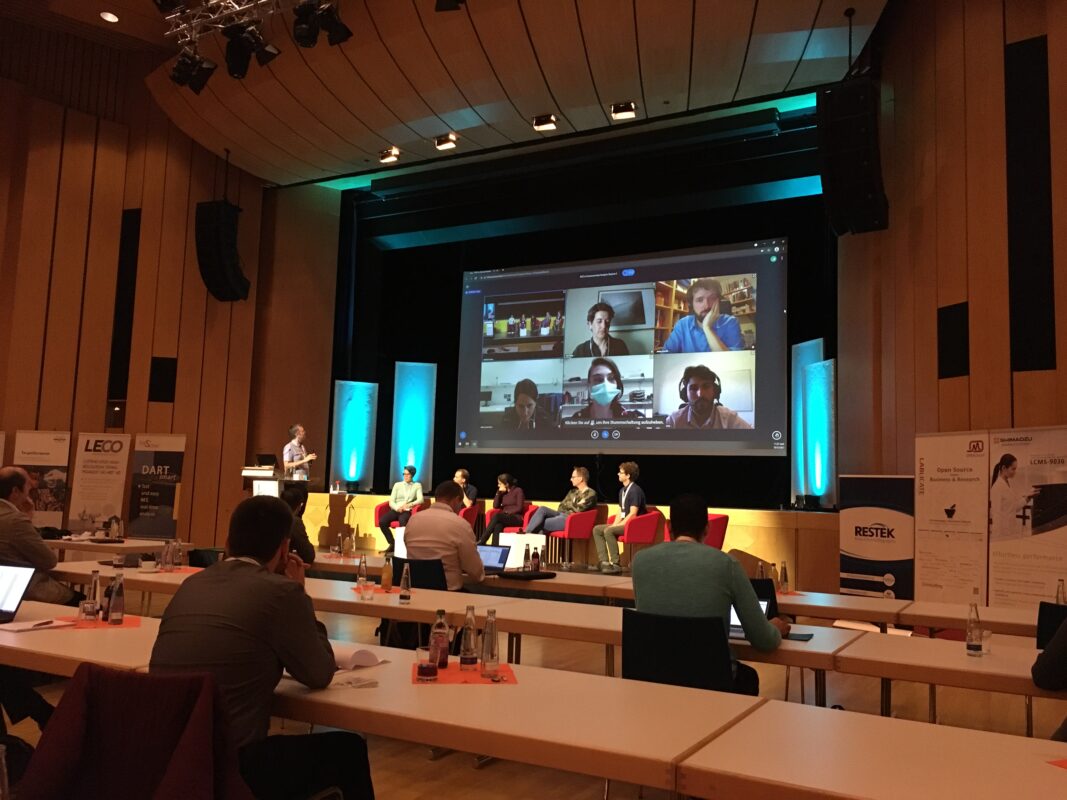After almost two years of zoom-only meetings, it was my great pleasure to last week get back to meeting fellow scientists in person at Intentional Conference on Non-Targeted Screening, Erding, Germany. The meeting was held in parallel in-person and online. The conference ran over four days with talks covering computational mass spectrometry, instrumental techniques for non-targeted analysis as well as different application fields.
After missing colleagues, collaborators, and peers around the world for almost two years, it was extremely nice to meet with the out non-targeted screening family in Erding last week. The conference kicked off on Monday with many very interesting talks on computational mass spectrometry. One of the highlights for me was the introduction of PubChemLite by Evan Bolton. PubChemLite focuses on reducing the chemical space that needs to be explored in the non-targeted analysis in exposomics. With about 300,000 chemicals, PubChemLite is highlighting the most relevant chemicals while also increasing the efficiency of the candidate search. A thorough introduction of PubChemLite and ints compilation has been recently published by Emma Schymanski et al.
Another very interesting talk came from Nienke Meekel from KWR, who presented a very recent paper in Analytical Chemistry. While usually the compounds are prioritized in non-targeted screening after collecting the dataNienke and colleagues reverse engineered this problem. Namely, they developed an online prioritization strategy for triggering MS/MS spectra for suspects with possible toxicophores or specific isotope patterns. As a result, more MS/MS spectra were collected for compounds with structural alerts.
I was also very happy to give an overview of some of the non-targeted related tools and ideas that we are developing here in Stockholm. The two main things I focussed on were using concentration to prioritize suspects in combination with toxicity, a recently published collaboration with Frederic Been and Andrea Brunner in Water Research, and overcoming the lack of structure for concentration estimates. The latter is work currently under revision and was carried out by Emma Palm in our group during her internship.
I would just like to really-really thank the organizers Thomas Letzel and Stefan Bieber, who really made a great experience! Thank you from the bottom of my heart!


